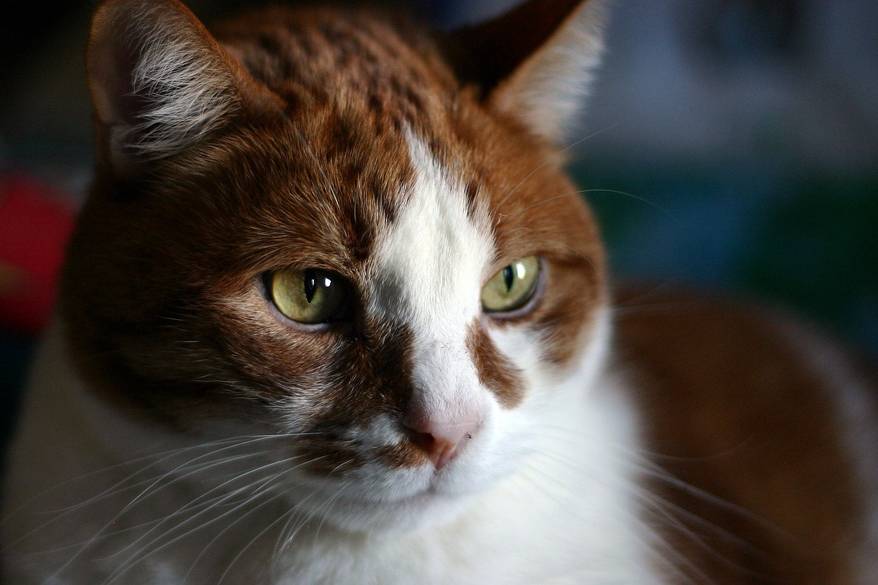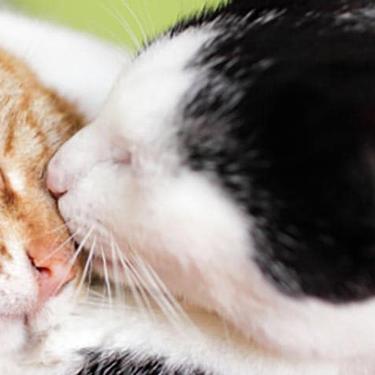
-
Find the right food for your petTake this quiz to see which food may be the best for your furry friend.Find the right food for your petTake this quiz to see which food may be the best for your furry friend.Featured products
 Puppy Large Breed Chicken & Brown Rice Recipe
Puppy Large Breed Chicken & Brown Rice RecipeVital nutrients to support 5 essential building blocks for lifelong health
Shop Now Adult Chicken & Barley Recipe Dog Food
Adult Chicken & Barley Recipe Dog FoodSupports lean muscle and beautiful coat for adult dogs
Shop Now Puppy Sensitive Stomach & Skin Salmon & Brown Rice Recipe
Puppy Sensitive Stomach & Skin Salmon & Brown Rice RecipeDelicious, highly digestible recipe, gentle on stomachs. Nourishes skin & promotes a lustrous coat
Shop NowFeatured products Adult 7+ Chicken Recipe Cat Food
Adult 7+ Chicken Recipe Cat FoodSupports energy level and beautiful fur in mature cats
Shop Now Kitten Chicken Recipe
Kitten Chicken RecipeVital nutrients to support 5 essential building blocks for lifelong health
Shop Now Adult Urinary Hairball Control Chicken & Rice Recipe Cat Food
Adult Urinary Hairball Control Chicken & Rice Recipe Cat FoodActively supports the health of the whole urinary system
Shop Now -
Dog
- Dog Tips & Articles
-
Health Category
- Weight
- Food & Environmental Sensitivities
- Urinary
- Digestive
- Joint
- Kidney
-
Life Stage
- Puppy Nutrition
- Adult Nutrition
- Senior Nutrition
Cat- Cat Tips & Articles
-
Health Category
- Weight
- Skin & Food Sensitivities
- Urinary
- Digestive
- Kidney
-
Life Stage
- Kitten Nutrition
- Adult Nutrition
Featured articles Water
WaterDiscover why water is the most important nutrient for your dog or cat to live a healthy life. Find out how much water your pet should consume each day.
Read More Pet Food Storage Tips
Pet Food Storage TipsDiscover how and where to store your dry, as well as canned, dog and cat food. Learn how to find the "best before" dates on all Hill's pet food packaging.
Read More The Incredible Science Behind Your Pet's Microbiome
The Incredible Science Behind Your Pet's MicrobiomeLearn what a pet's microbiome is, how it contributes to your pet's gut & overall health, and why nutrition is important in maintaining healthy microbiomes.
Read More -


Cancer in cats is unfortunately considered relatively common and more prevalent than ever before. But why?
In part, it's because cats are living longer. It's not unusual for veterinarians to see two or even three cats over the age of 15 every day. They're the beneficiaries of great home care, advanced nutritional research and modern veterinary medicine. Read on to learn about the signs to look out for and how to give your kitty the best possible oncology care if she ever needs it.
Defining Cancer

What exactly constitutes a cancer? Contrary to popular opinion, not every ugly mass, growth or cat tumor qualifies.
Cancer is best defined as a disorder caused by the uncontrolled division of abnormal cells. A cancer may originate in one single tissue of the body, but it can sometimes affect faraway organs as it spreads, typically through the circulatory and lymphatic systems by a process vets refer to as metastasis. For example, cells dividing in a tumor that starts in your cat's ear could travel through the bloodstream to her liver.
Most Common Cat Tumors
Just like in people, cancer in cats is often hereditary, which makes it more prevalent within specific genetic lines. This means that some breeds of cats can be predisposed. It also means that some cancers are more common in cats than they are in people. Here are the most typical kinds of cancer in cats:
- Lymphoma: Often associated with the feline leukemia virus, the Cornell Feline Health Center notes that this is perhaps the most common cause of cat cancer overall.
- Squamous cell carcinoma: The oral version tends to be aggressive, destructive and painful, says Cornell Feline Health Center, but lesions tend not to spread. The skin form is similarly localized and primarily affects the skin of the nose and ear tips. Ultraviolet light exposure is strongly associated with this type of cancer.
- Fibrosarcoma or soft tissue sarcoma: This is a cat tumor that forms in a muscle or connective tissue of the body, writes Wag!. It can appear just about anywhere on your cat's body.
- Mammary tumors: Cornell Feline Health Center notes that these are considered relatively common in intact cats, but among cats spayed before puberty (like the vast majority of our household companions) they're deemed very rare.


Tasty Tips
Rare Cat Tumor Types
- Skin tumors are uncommon in cats, but since they tend to grow aggressively, most suspicious skin tumors should be removed.
- Lung tumors happen most commonly when other cancers spread through the blood and lymphatic system to the delicate lobes that comprise the lungs.
- Brain tumors can happen when cancers metastasize from elsewhere, but they can also originate in the brain.
- Nasal tumors tend to start in the nose and can be very aggressive.
- Liver tumors that originate as the first cancer site make up a small percentage of all cat tumors, but the liver is a popular site for metastasis.
The signs of cancer also aren't at all straightforward (in most cases). Except for obvious lumps and other superficial lesions, they tend to be non-specific and similar to the signs of other kinds of internal disease. Here are the most common signs of cancer in cats:
- Weight loss: Losing weight in spite of no obvious change in appetite is among the most common signs cat parents should look out for.
- Poor appetite: Any change in appetite is a red flag that calls for immediate veterinary attention.
- Changes in eating style: Eating messily or chewing with one side of the mouth can be the sign of an oral tumor. (Dental issues are highly suspect here, too.)
- Lethargy: Moving around less or hiding behavior is common in sick cats.
- Lumps, bumps and skin lesions: These are the most obvious but not the most common.
- Vomiting and diarrhea: Cancer in cats often affects the digestive system.
- Breathing changes: Any changes in respiration are cause for concern. Some cancers can cause fluid or inflammation in or around the lungs.
Any of these should motivate a cat parent to take their pet to the vet immediately.
Cancer Treatment
Modern veterinary medicine has made treatment of cancer in cats more effective and more humane than ever before. Treatment protocols geared to sensitive feline personalities are being developed every day. Ideally, they're undertaken in a home environment, but some part of the therapy is typically performed in a veterinary hospital setting.
While surgery is often in order for superficial cat tumors (squamous cell carcinoma of the skin and mouth, soft tissue sarcomas and mammary tumors, for example), chemotherapy may be required. Though it sounds scary, chemotherapy is different in cats than it is in people. Its goal is simply to send the cancer into remission without affecting your furry friend's quality of life. If at any time your cat becomes uncomfortable as a result of the therapy (usually injections), the treatment may be stopped. Radiation therapy is an option too, but it's less often undertaken for cats.
The aim of any cancer treatment, regardless of the kind of cat tumor, is to improve the patient's quality of life. If your cat is diagnosed with cancer, your vet can suggest the best course of treatment and help her back on her way to wellness.


Dr. Patty Khuly is an award-winning veterinarian known for her independent thinking, her spirited pet advocacy, her passion for the veterinary profession, and her famously irreverent pet health writing.
Dr. K is an honors graduate of both Wellesley College and the University of Pennsylvania School of Veterinary Medicine. She received her MBA at The Wharton School of Business as part of the prestigious VMD/MBA dual-degree program. She now owns Sunset Animal Clinic, a veterinary practice in Miami, Florida.
Related products

Actively supports the health of the whole urinary system

Vital nutrients to support 5 essential building blocks for lifelong health

Supports lean muscle and beautiful fur for adult cats

Supports energy level and beautiful fur in mature cats
Related articles

What is the best food for an overweight cat? Learn all about weight control food for cats, including what's in it and how it works.

Learn the different factors that might be contributing to your cat's weight gain, and how bigger doesn't always mean better.

Brushing your cat's teeth is just as important as brushing your own. Learn signs or oral health problems in your cat and how to avoid them.

Discover how to identify cat sensitive skin and what you can do to help your cat thrive from head to paw.

Put your cat on a diet without them knowing
Our low calorie formula helps you control your cat's weight. It's packed with high-quality protein for building lean muscles, and made with purposeful ingredients for a flavorful, nutritious meal. Clinically proven antioxidants, Vitamin C+E, help promote a healthy immune system.
Put your cat on a diet without them knowing
Our low calorie formula helps you control your cat's weight. It's packed with high-quality protein for building lean muscles, and made with purposeful ingredients for a flavorful, nutritious meal. Clinically proven antioxidants, Vitamin C+E, help promote a healthy immune system.

